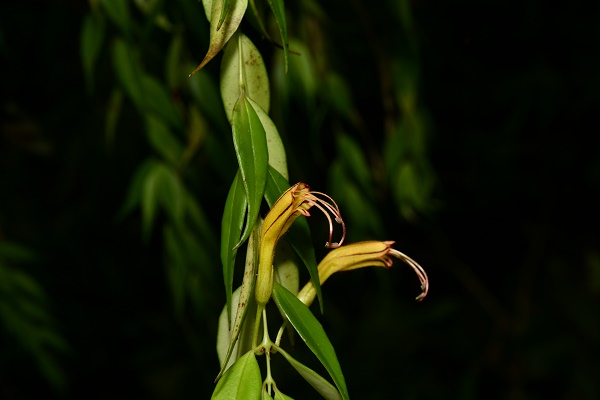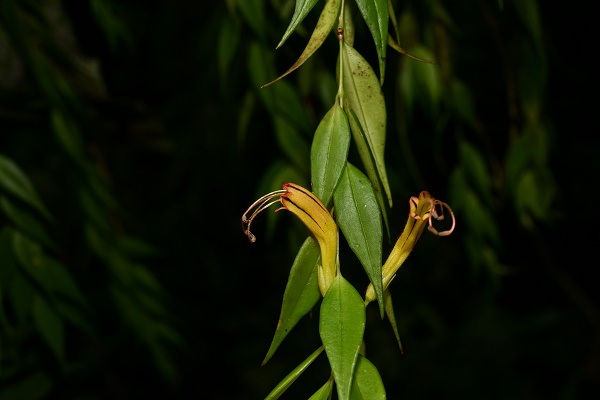The genus Aeschynanthus, commonly known as lipstick plants, comprises about 170 species. Currently, 36 known species of Aeschynanthus have been known to occur in China, 14 of which are endemic.
Researchers from Xishuangbanna Tropical Botanical Garden (XTBG) encountered and collected a brownish-yellow flowered plant of Aeschynanthus, during the botanical surveys in the China-Myanmar transboundary region in Yunnan, China between 2020 to 2023. After extensive morphological comparisons with several similar species from China and neighboring countries, the researchers conformed that the unknown plant is new to science.
"An examination of specimens revealed that the earliest specimen of this species was collected by Mr. ZHU Taiping in 1958 in Canyuan County, Yunnan, and was not collected again for nearly fifty years until it was re-collected by several collectors after 2006; however, none of these specimens were correctly identified,” said TAN Yunhong of XTBG.
They named the new species as Aeschynanthus wangii to honor Prof. WANG WenTsai (W.T. Wang, 1926–2022), who made significant contributions to the flora of China. Related result was published in Taiwania.
Aeschynanthus wangii is an epiphytic sub-shrub, pendulous and branched. It grows on moist, shady tree trunk surfaces in evergreen forests at around 1200–1900 m elevation. It is morphologically similar to A. angustioblongus and A. stenosepalus, but significantly different from them by having lanceolate leaves with long caudate apex, brownish yellow corolla with five dark red lines from the middle of corolla tube to the top of the lobes, and calyx lobes slightly fused into calyx tube at the base.
Aeschynanthus wangii was only seen from several populations in the Yunnan Nanggunhe Nature Reserve and Yunnan Tongbiguan Provincial Nature Reserve. The researchers cannot conclude whether it is relatively common or rare. They thus assessed the conservation status of the new species as data deficient (DD), according to the International Union for Conservation of Nature (IUCN) standard.
Contact
TAN Yunhong Principal Investigator
Center for Integrative Conservation, Xishuangbanna Tropical Botanical Garden, Chinese Academy of Sciences, Menglun, Mengla, Yunnan 666303, China
E-mail: tyh@xtbg.org.cn
First published: 2 April 2024

Aeschynanthus wangii (Image by DING Hongbo)

Aeschynanthus wangii (Image by DING Hongbo)

Aeschynanthus wangii (Image by DING Hongbo)

Aeschynanthus wangii (Image by DING Hongbo)




